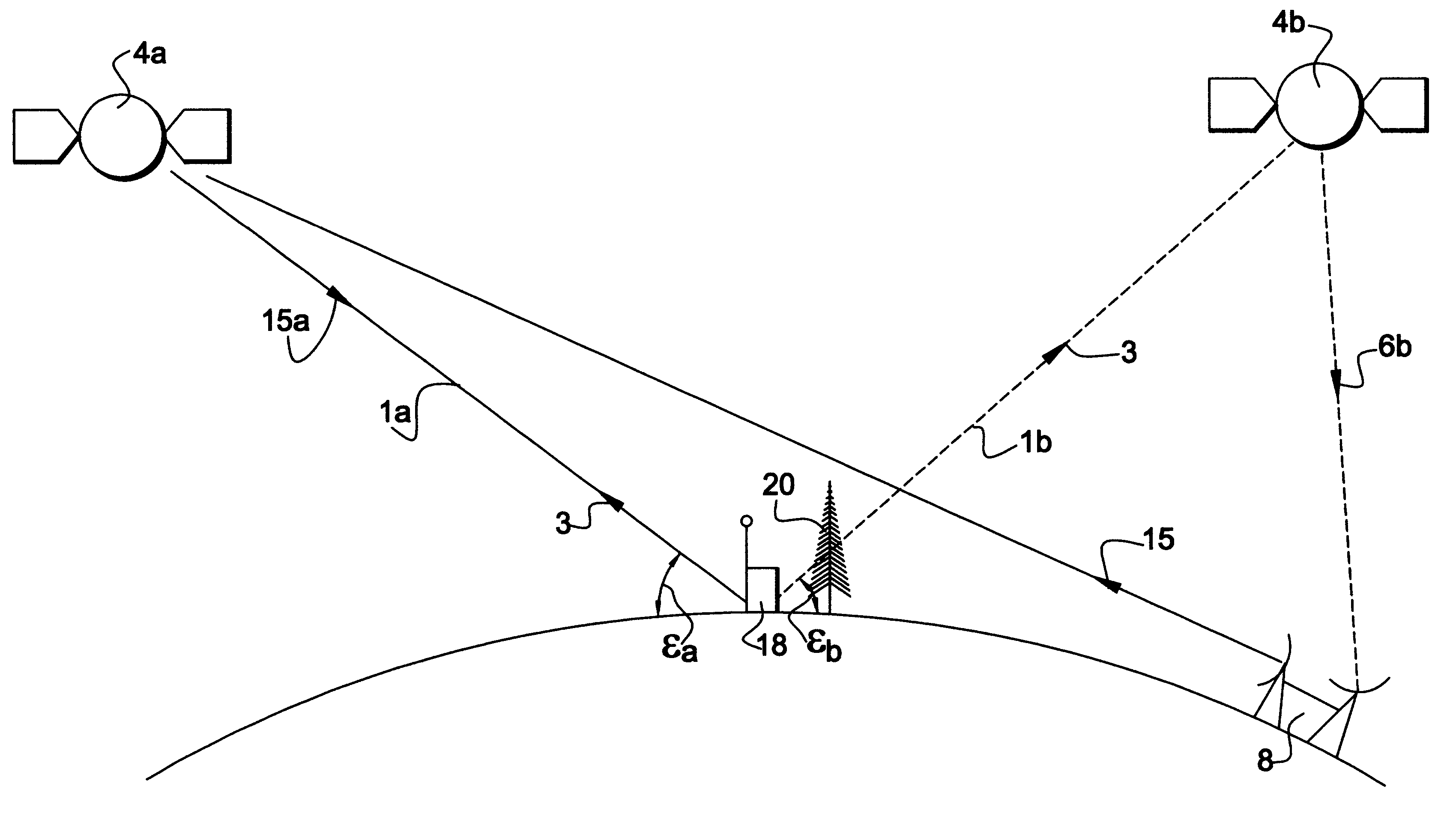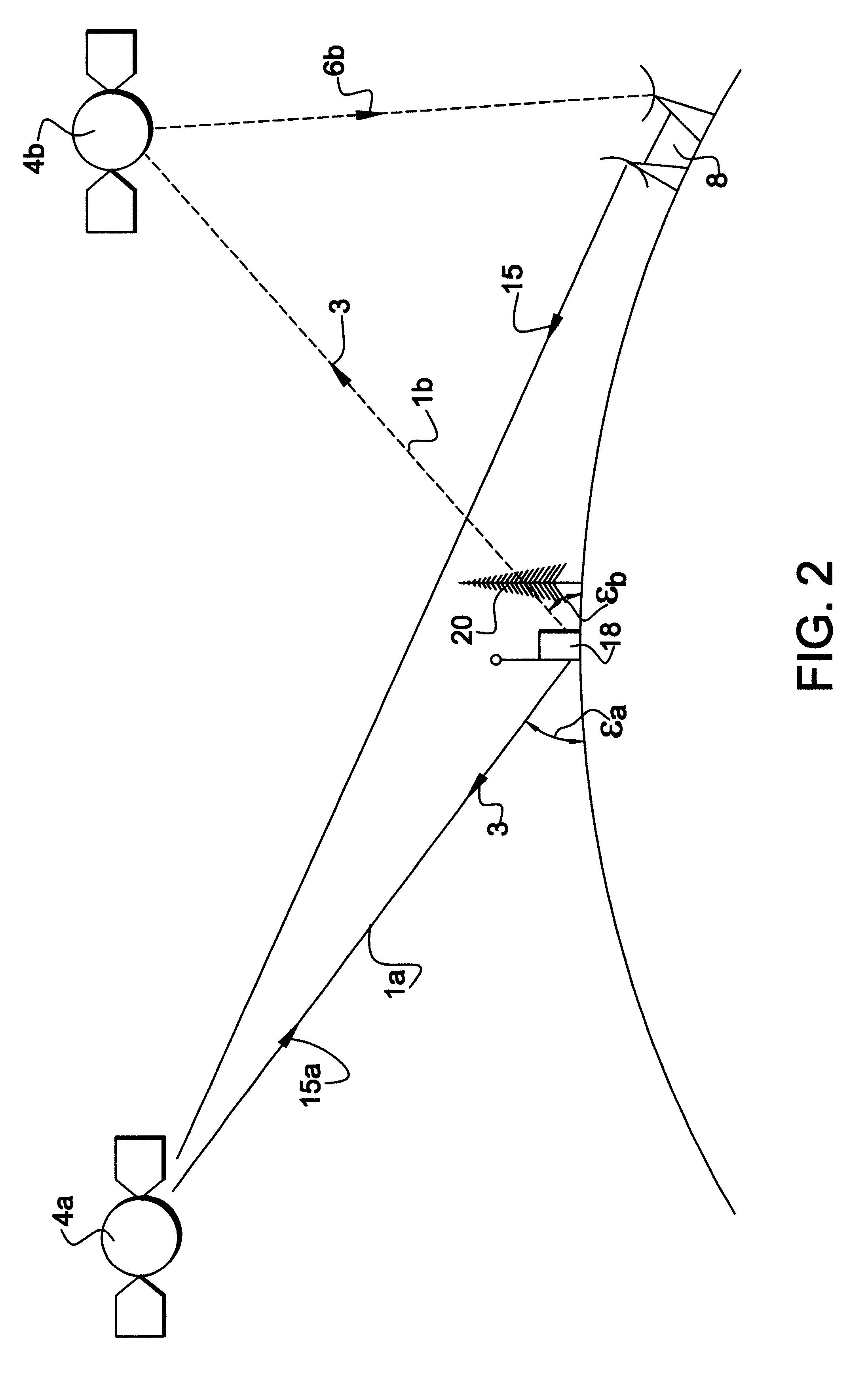Multi-beam TDMA satellite mobile communications system
a mobile communication system and multi-beam technology, applied in the field of satellite communication methods and apparatuses, can solve the problems of weak communication link between the terminal and any one satellite, inoperable link, loss of part of signal, etc., and achieve the effect of reducing error in received signal, and reducing blockage and fading
- Summary
- Abstract
- Description
- Claims
- Application Information
AI Technical Summary
Benefits of technology
Problems solved by technology
Method used
Image
Examples
first embodiment
A first embodiment of the present invention will now be described with reference to FIGS. 1 to 8.
In FIG. 1, a transmitter 2 of a mobile terminal transmits a signal 3. The mobile terminal has a substantially omni-directional antenna, so that the transmitted signal 3 is received by a first satellite 4a and a second satellite 4b in view of the mobile terminal. The signal 3 is retransmitted from each satellite 4a, 4b as separate signals 3a and 3b. These signals 3a and 3b are received by an earth station 8 having first and second receivers 8a and 8b for receiving signals from the first and second satellites 4a and 4b respectively. In this embodiment, the earth station 8 has first and second directional antennas directed towards the first and second satellites 4a, 4b respectively. Thus, the same information is received twice by the earth station 8 in the separate signals 3a and 3b. The earth station 8 may therefore select the better of the two signals 3a and 3b, e.g. the one with the lowe...
second embodiment
A second embodiment will now be described with reference to FIGS. 1 to 5, 10 and 11. The second embodiment differs from the first embodiment in the operation of the earth station 8, mobile terminal 18 and satellites 4, and in that the mobile terminal 18 receives signals from different satellites 4 in different time slots.
Signalling Format
As shown in FIG. 10, the mobile terminal 18 communicates with the earth station 8 during allocated time slots t within a repeating time frame T, via the first and second satellites 4a, 4b, or via first and second beams of one satellite, at pairs of frequencies f.sub.1, f.sub.1 ' and f.sub.2, f.sub.2 ' respectively.
In the example shown, the earth station 8 transmits a packet Rx.sub.1 in time slot t.sub.1 via the first satellite 4a, which packet is received at frequency f.sub.1 by the mobile terminal 18. The mobile terminal 18 then transmits a packet Tx.sub.1 in time slot t.sub.3 at the frequency f.sub.1 ' via a beam generated by the satellite 4a. The...
PUM
 Login to View More
Login to View More Abstract
Description
Claims
Application Information
 Login to View More
Login to View More - R&D
- Intellectual Property
- Life Sciences
- Materials
- Tech Scout
- Unparalleled Data Quality
- Higher Quality Content
- 60% Fewer Hallucinations
Browse by: Latest US Patents, China's latest patents, Technical Efficacy Thesaurus, Application Domain, Technology Topic, Popular Technical Reports.
© 2025 PatSnap. All rights reserved.Legal|Privacy policy|Modern Slavery Act Transparency Statement|Sitemap|About US| Contact US: help@patsnap.com



